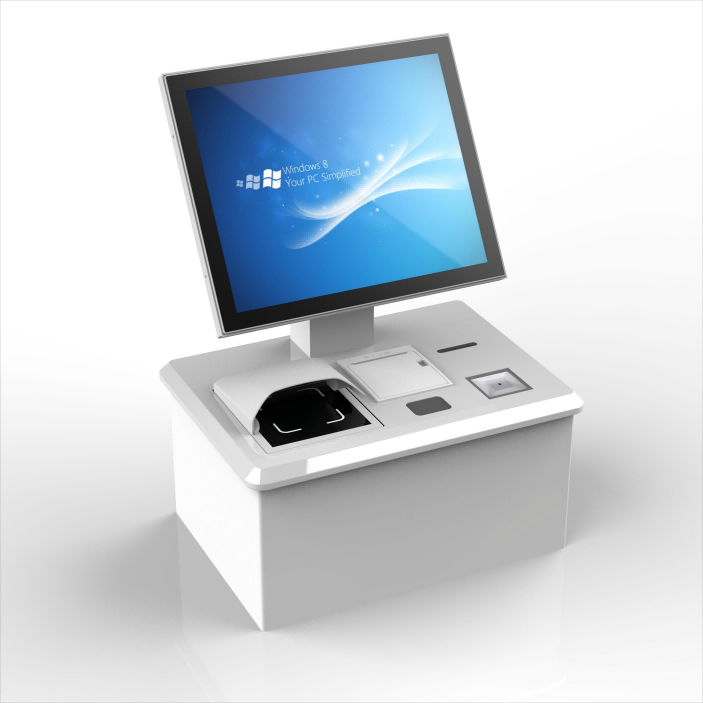An Kiosk at airport is an automated self-service device located within airports designed to enhance passenger convenience and streamline airport operations. These kiosks typically provide services such as check-in, baggage tag printing, flight information inquiry, and boarding pass printing. They are designed to reduce wait times, increase efficiency, and offer a user-friendly experience for travelers.

Industry Uses:
1. Check-in Services: Allow passengers to check in, select or change seats, and print boarding passes.
2. Baggage Services: Assist passengers in printing baggage tags and sometimes paying for excess baggage fees.
3. Flight Information: Provide real-time updates on flight schedules, gate changes, and boarding times.
4. Customer Service: Assist with various travel-related inquiries and connect passengers with on-site customer service representatives if needed.
5. Navigation Functionality: Offer interactive maps and directions to gates, restaurants, shops, and other airport facilities.
6. Ticketing Services: Allow passengers to book or change flights, upgrade seats, or purchase additional services.
1. Efficiency: Reduce queues and wait times, speeding up the check-in and boarding process.
2. Convenience: Provide a quick and easy way for passengers to manage their travel needs without needing staff assistance.
3. Cost Savings: Lower operational costs for airlines and airports by reducing the need for staffed check-in counters.
4. Enhanced Experience: Improve passenger satisfaction by offering a seamless and stress-free airport experience.
5. 24/7 Availability: Operate around the clock, allowing passengers to access services at any time.
1. Touchscreen Display
- Used for user interaction and information display. Typically, high-resolution capacitive touchscreens are used to ensure smooth operation and clear display.
2. Barcode Scanner
- Used to scan barcodes on boarding passes and passports for quick retrieval of passenger information.
3. Printer
- Used to print boarding passes and baggage tags. Usually equipped with thermal printing technology to enhance printing speed and clarity.
4. Card Reader
- Supports reading of magnetic stripe and chip cards for handling credit card payments and identity verification.
5. RFID Reader
- Used to scan and identify luggage or other items with RFID tags.
6. Keyboard and Signature Pad
- For users to enter additional information or provide signatures.
7. Camera
- Used for facial recognition, identity verification, and security monitoring.
8. Audio Output Devices
- Provide voice prompts and multi-language support to enhance user experience.
9. Network Connection Module
- Supports wired and wireless network connections to ensure real-time communication and data transmission with the backend system.
10. Cabinet and Security Lock
- Protects internal components and prevents unauthorized access and tampering.
1. Operating System
- Common operating systems include Windows, Linux, or Android, providing a stable running environment and diverse development interfaces.
2. Application Software
- Custom-developed self-service kiosk applications responsible for interface display, user interaction, and data processing. Typically designed in a modular fashion to facilitate feature expansion and updates.
3. Backend Management System
- Responsible for device monitoring, data collection and analysis, content management, and system maintenance. Provides remote monitoring and management functions to ensure the normal operation and timely maintenance of the devices.
4. Database System
- Stores user data, transaction records, and log information. Common database systems include MySQL, PostgreSQL, etc.
5. Network Communication Module
- Uses TCP/IP protocol to exchange data with the backend server through wired or wireless networks. Supports VPN and other secure connection methods to ensure data transmission security.
6. Security Module
- Includes firewalls, encryption modules, authentication systems, etc., to ensure the security of data and user information.
7. Interface Module
- Provides interfaces with airline systems, airport management systems, and payment gateways to ensure seamless integration and data sharing with external systems.